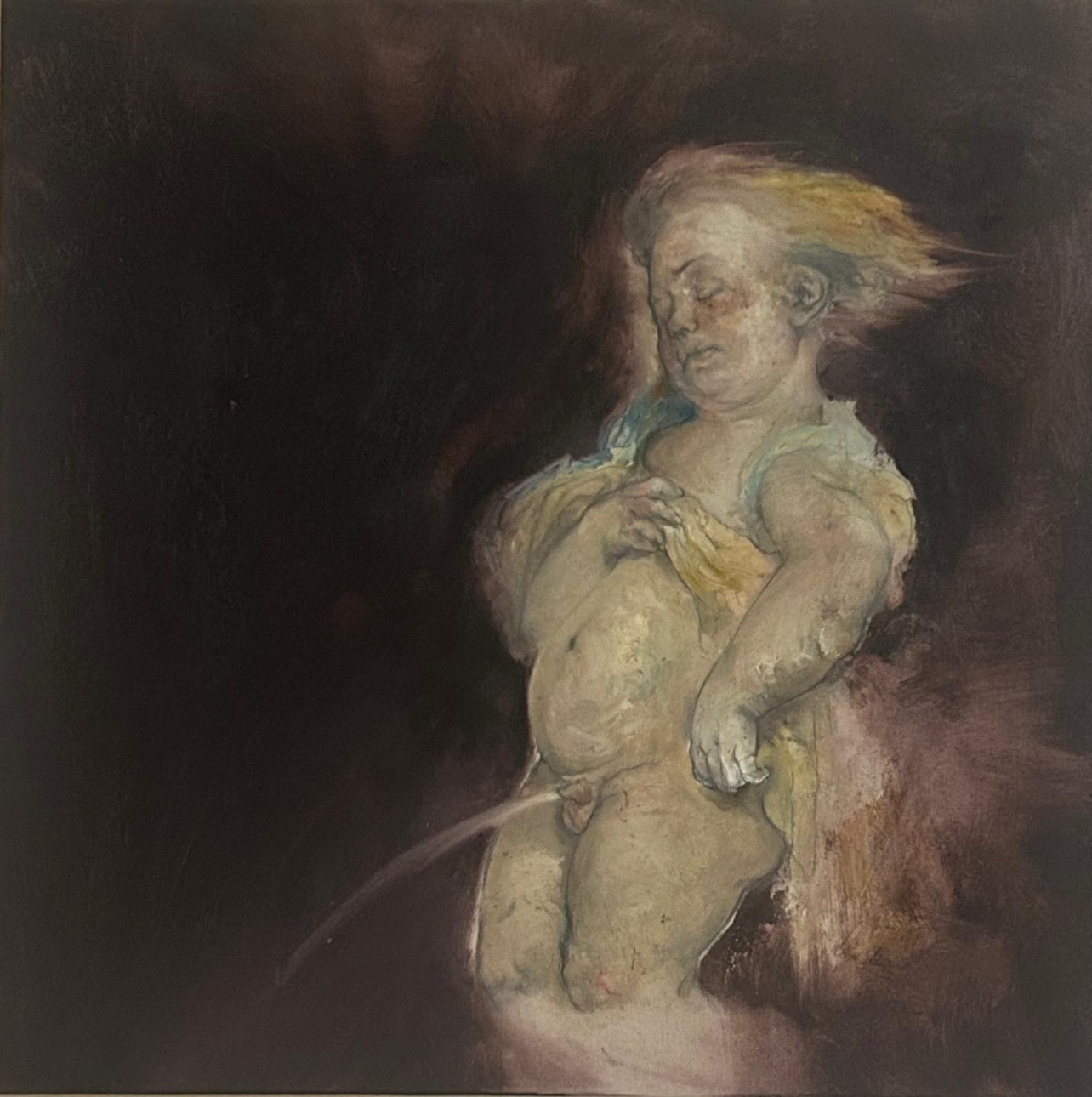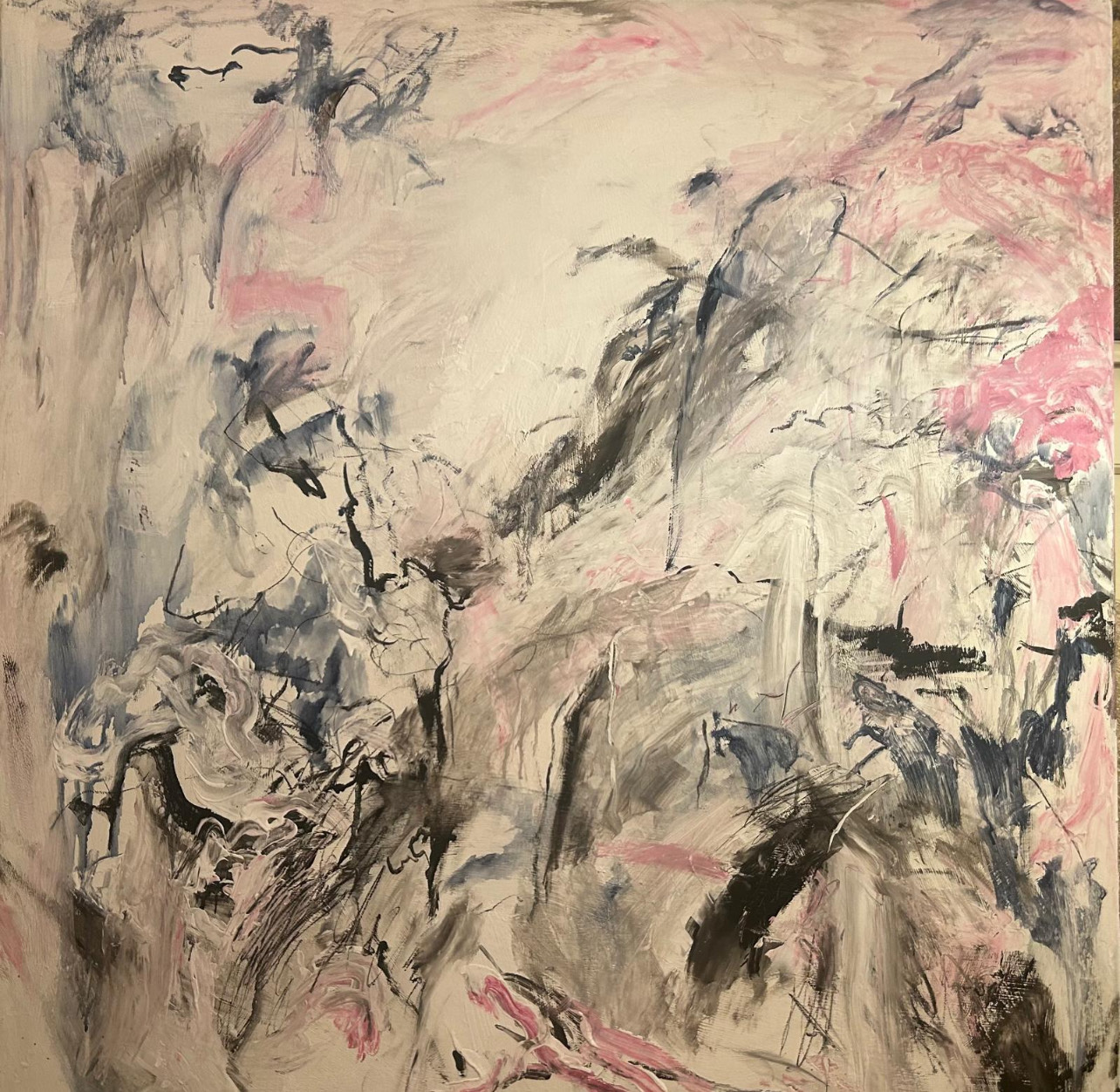Triple Anniversary of an Artist-Run Space, Patronage Program and Residency
Contemporary Art from the Petro–de Chalendar Collection
Gábor Ébli
Spring in Autumn Art Camp, Bercel Castle, 19–26 October 2025
Twenty Years of the Budapest Art Factory. International Contemporary Art from the Petro–de Chalendar Collection, B32 Gallery, 22 May –12 June 2025
Twenty-Five Years of Contemporary Art and Photography from the Petro–de Chalendar Collection, Újbuda Gallery, 6–28 March 2025
Budapest Art Factory (BAF) has entered its twentieth year. This artist-run centre – originally located in the vast hall of the former Láng Machine Factory in the North of Budapest – offering a studio and exhibition space, was launched in the 2000s under the joint leadership of art manager Diane C. Brown and artists Márta Kucsora, Sándor Szász and Dóra Juhász. Since the relocation of the American art manager abroad, the initiative has been carried on by the artists.
The centre had to move twice – first to another site of industrial reuse in the same district, then recently to its current location, a unit of the former Weiss Manfréd Aircraft Factory in the Újbuda district. After securing a long-term lease, the 700-square-meter space was renovated through the self-funding of the artists, reaching an exemplary standard even on an international scale.
Since 2013, BAF has also been hosting an international artist-in-residence program.[1] Nearly fifty artists and curators from abroad have spent time working here. Their accommodation in Budapest has been supported by the Hungarian / French couple, Kinga Petro and Philippe de Chalendar. In return, the artists each contribute a work of art, resulting in the expansion of a contemporary art collection that began twenty-five years ago with solely Hungarian pieces, and which now comprises a significant international segment. This dual milestone – BAF’s 20th and the Collection’s 25th anniversary – was celebrated with two coordinated exhibitions at venues operated by the local government of Újbuda.
This was the first public display of the Collection.[2] Previously, it had been published only in articles, in the 2009 volume of the Contemporary Private Collectors series by Edge Communications, and in the 2010 issue of RepertoArt. It can also be followed on Facebook under the pseudonym Collection 88.
Article icon
Mircea But:Untitled ╱ 2017 ╱ oil on canvas ╱ 110×80 cm
Cover Image
Márta Kucsora: Untitled ╱ 2007 ╱ mixed technique, canvas ╱ 115×205 cm
Gesa Lange: Solvat #6 ╱ 2017 ╱ pencil, graphite and pigment on canvas ╱ 39,5×29 cm
The painting by American artist Damian Stamer powerfully conveys the emotional resonance of Budapest hospitality. Created in 2018, the work is part of a series inspired by barns and other historic structures in North Carolina. The artist investigates the transformation of the landscape and environment of his childhood, along with the persistence – or dissolution – of spatial memory over time. What remains of our early experiences as time passes? Can we return to our dreams, our past, as tourists of memory? These questions underpin the series, titled Dream Hotel. During the preparation of this year’s exhibition, Stamer recalled in our email exchange how unexpectedly at home he had felt in the artist apartment nestled in a side street off Andrássy Avenue, close to the Hungarian State Opera. As a tribute to this experience, he gifted the painting to the collection and titled it Dream Hotel Opera.
In the case of British artist Caroline Walker, her connection to Budapest emerges through the motif of the city’s thermal baths. Her art centres on the exploration of female roles. In the work included in the Collection, the dark-toned interior architecture of the bath dominates the composition, with light illuminating only the central figure swimming through the water. Within these strict, classical architectural frames, the freely moving female figure becomes both a memory and an image of longing. The series is based on snapshots taken in Budapest’s baths, but rather than depicting specific scenes or locations, it presents a fictional montage constructed from lived impressions, hence the title Bathhouse X. As a continuation of the art historical tradition of bath-themed paintings and photographs, this work foregrounds the viewer’s voyeuristic position, as recipient of the gaze, and questions how we look and what it means to look.
Andrei Gamart’s painting also balances between reality and imagination. Born in Chișinău, where he completed both his undergraduate and graduate studies, the artist now lives and works in Bucharest. His piece in the collection, titled 8 a.m., is structured around a dynamic interplay of light and shadow. Morning sunlight glints off the mirrored surface of a classical piece of furniture. It is only on second glance that one notices a ghostly, slightly unsettling human hand and, resting upon it, a frog- or lizard-like creature staring directly back at us through the mirror.[3]
Enigmas and riddles lie at the heart of the pieces of Christopher Orr, a Scottish-born artist now based in London. His paintings present imagined, dreamlike and hypothetically possible, yet ultimately unreal, scenarios that resist rational comprehension. The more we attempt to interpret them logically, the more they elude us. In the painting included in the Collection, it remains deliberately unclear how many figures are lying there, precisely where they are, or where their gazes are directed within the mystically swirling ether.
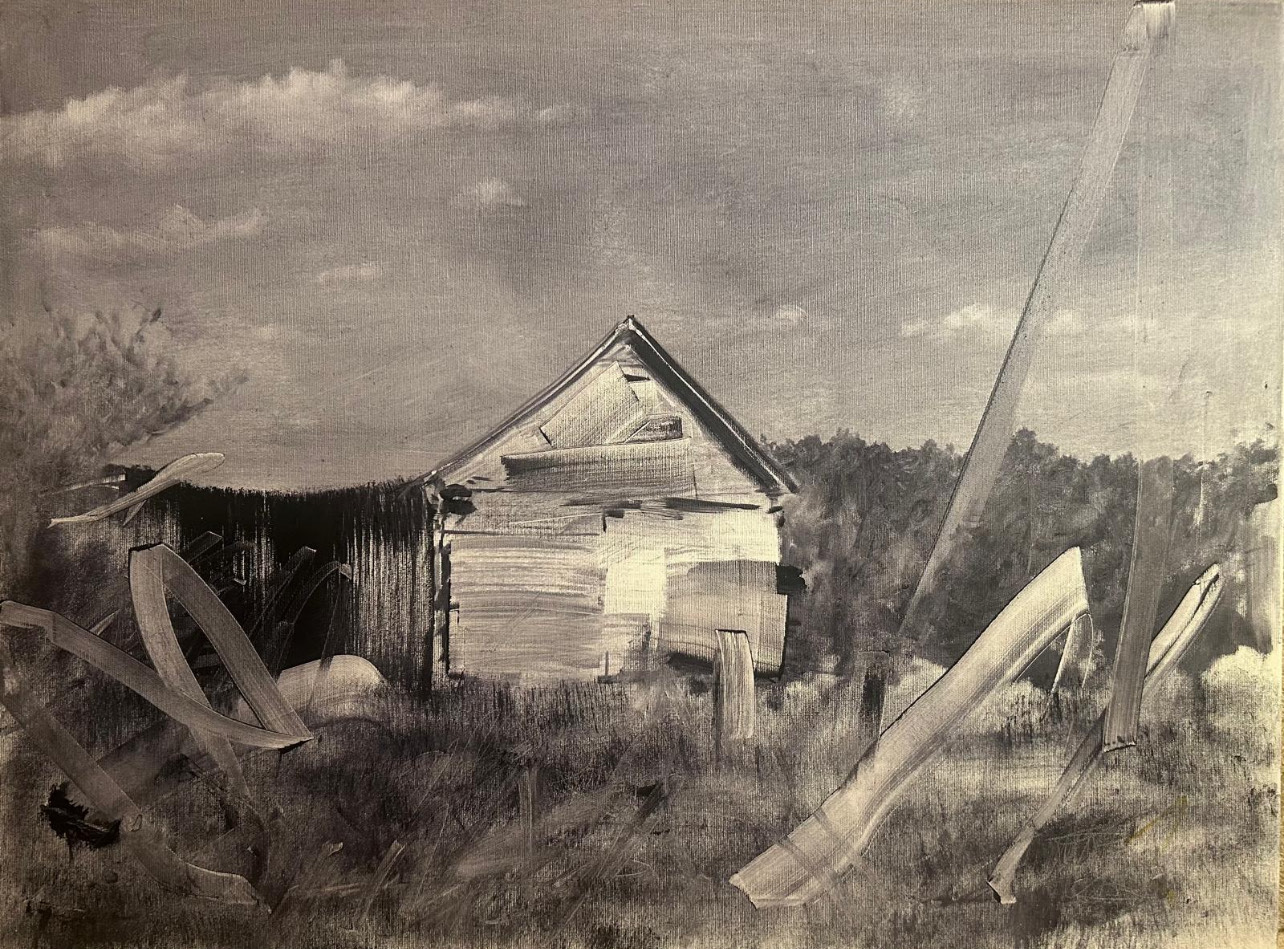
Damian Stamer: Dream Hotel Opera ╱ 2017 ╱ oil on canvas ╱ 60×80 cm
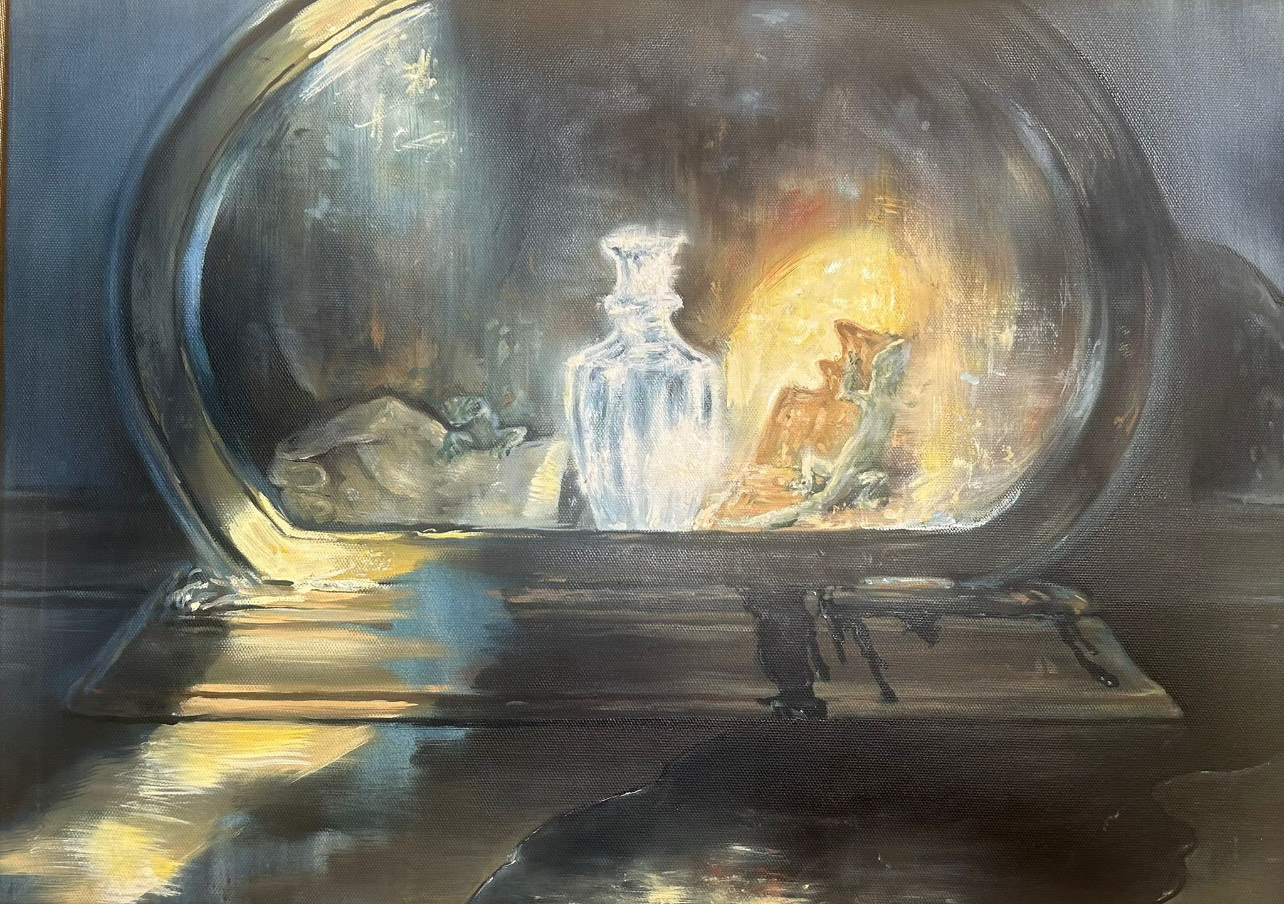
Andrei Gamart: 8 a.m. ╱ 2018 ╱ oil on canvas ╱ 50×70 cm
[4] Lemuria: a prehistoric, imaginary world
The work of German artist Gabriele Basch departs even further from recognizable motifs. Since 2012, she has led a painting department at an arts university in Hamburg. Her palette is subtle, with only faint traces of nature showing through, like plant patterns, maybe the trunk of a tree, or the outline of a bird. Multiple layers are superimposed, prompting the viewer’s eye to shift instinctively back and forth between the different surfaces. It is as if memories were layered on top of each other, with fragments of different temporalities interacting with the present. This is the source of the nostalgic atmosphere in Golden Age, the painting included in the Collection: the viewer drifts into a semi-fictional landscape of the past, devoid of human presence.
Gesa Lange is also based in Hamburg, where she works as a professor of graphic art. Born in Belgium, the German artist creates works that are the result of patience, meticulous hand-drawing and various graphic techniques. She has published artist’s books, and her sewn-paper pieces are particularly distinctive. This sensitive, feminine visual language largely remains within the refined grey tones of graphite. The work included in the Collection is a drawing on canvas made with pencil and acrylic. Can a figure be discerned within the amorphous, organic shape? Or is it more of an imagined presence, an internal vision shaped by the slow, meditative process of creation, a journey inward towards a psychological self-portrait?
The art of American-born Lisa Solberg, who recently relocated to London, is nourished by the forces of Mother Nature and inner feminine energy. A distinctly dynamic creator, formerly an internationally recognized competitive skier in addition to her public installations and activist art projects, she often incorporates her own body or the transformative, destructive power of fire into her work. The piece included in the Collection is both a gestural painting, spanning a colour spectrum from pink to soot black and an indirect self-portrait, charged with movement, physical effort and personal energy.
Avi Roth, an American artist born in Oradea, Romania, close to its Hungarian border, turns toward an idealized past. Although not a BAF resident, he too stayed in the artist apartment and regularly spends time in Budapest alongside his Los Angeles base. He calls his technique coffeegraph: painting with pigment extracted from coffee beans. Through this natural material, he seeks a kind of magical force, one that offers a path from today’s industrial society toward a more authentic alternative rooted in rediscovered values of the past. The Collection includes a numbered print of his large painting, Lemuria, the Lost Motherland, where flowing colours suggest a mythical past.[4]
Mircea But: Untitled ╱ 2017 ╱ oil on canvas ╱ 110×80 cm
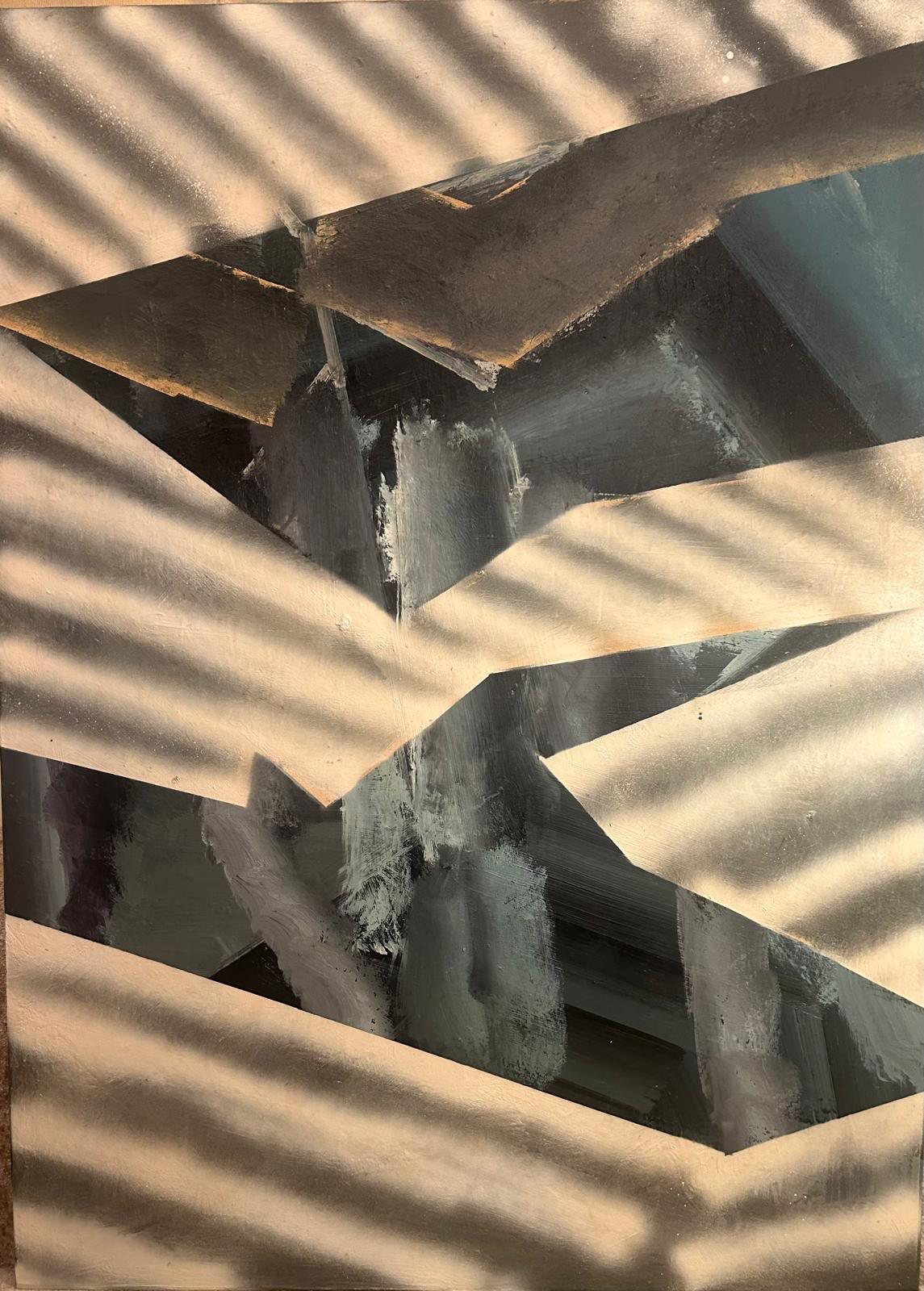
Mircea But: Untitled ╱ 2017 ╱ oil on canvas ╱ 110×80 cm
Also engaging with the reinterpretation of the past, yet through figurative means, is the German painter under the pseudonym Sabina Sakoh since 2010. Sakoh was a BAF resident artist in 2014 and produced studies for her subsequent large-scale series titled Democracy.[5] One of these studies, a painting depicting an angel, entered this Collection. Sakoh’s paintings approach classical motifs with a surreal sensibility, embedding subtly but unmistakably pointed social critiques of our present-day society.
Overall, the collection features around thirty international artists, ranging from the American Joseph Nechvatal and the German Max Frintropp to the South African Gawie Joubert. Representing the Central and Eastern European region are, for example, Latvian Janis Avotins, Romanian Mircea But, and the Czech artist duo David Böhm and Jiří Franta.
Peter Peri, based in London, comes from Hungarian roots, his grandfather, the avant-garde artist László Péri, emigrated to the United Kingdom in 1933 and adopted the name Peter Peri upon gaining British citizenship six years later. In 2016, his grandson was invited by the then Art + Text Budapest Gallery and BAF to work and present a solo exhibition in Budapest, showcasing his minimalist graphic work.
A unique highlight was Candaş Şişman’s interdisciplinary project blending music and visual art. In 2013, the Turkish artist staged a sound performance in Budapest featuring trumpet by Lőrinc Barabás and cello by Mátyás Ölveti, accompanied by large-scale computer prints installed as friezes on the gallery walls, resembling musical scores. The event created a dialogue between sound transmission and graphic encoding, notation and symbolism.[6]
This diverse international art collection connects seamlessly with other segments of the Collection 88. The growth of the contemporary Hungarian Collection began 25 years ago when the couple hosted Hungarian artists in their Paris apartment (located at number 88 of a street close the Pompidou Centre, which inspired the Collection’s original name). Over the years, the works received in exchange formed a narrative arc stretching from László Győrffy through Péter Ujházi to Róbert Várady.
Christopher Orr : Untitled ╱ 2018 ╱ oil on canvas ╱ 25×20 cm
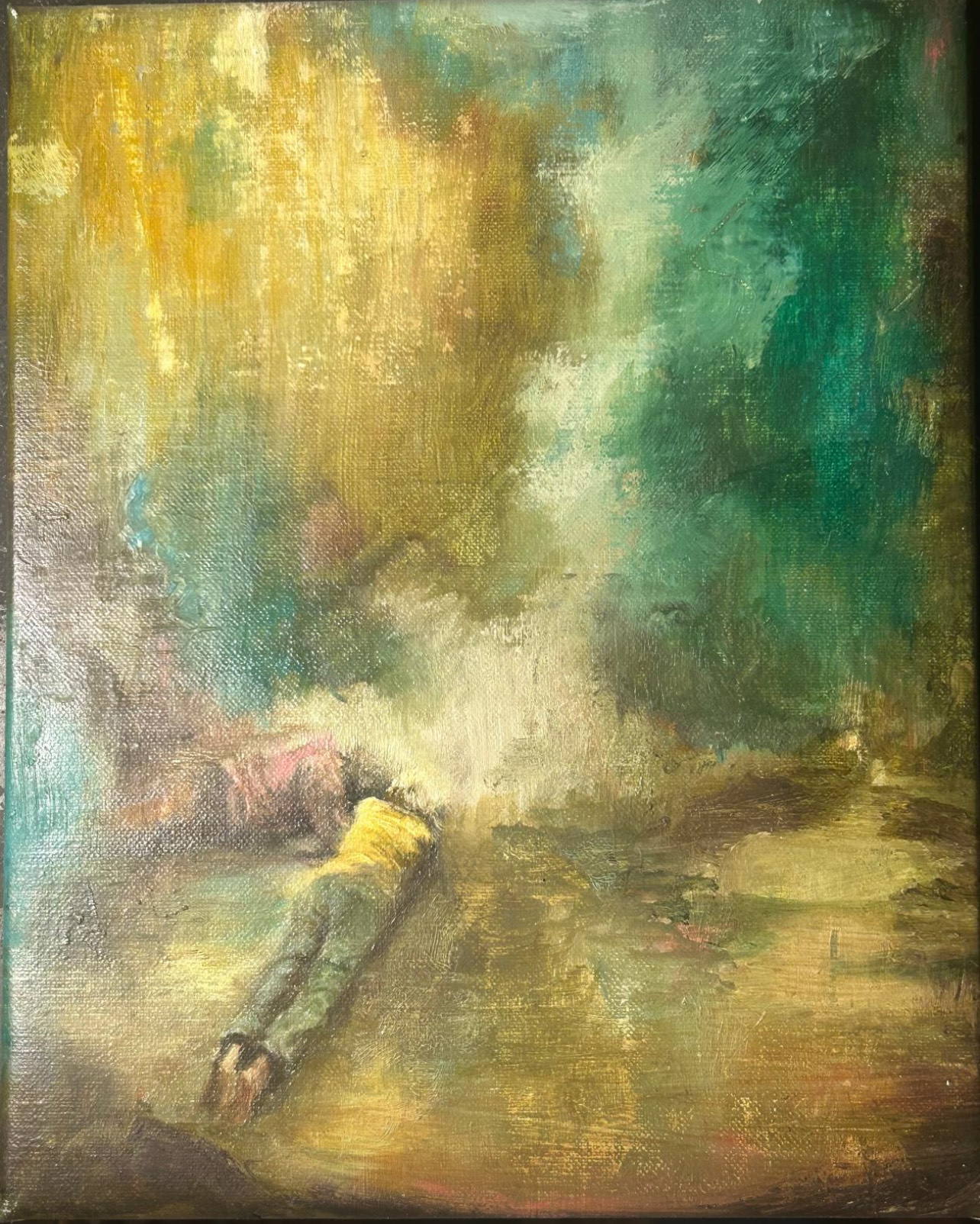
Christopher Orr: Untitled ╱ 2018 ╱ oil on canvas ╱ 25×20 cm
The Collection’s third segment also builds on artists’ international mobility. Kinga Petro and Philippe de Chalendar organise Japanese / Hungarian artist residencies at Bercel Castle in Nógrád, just an hour’s drive from Budapest, curated with the support of sculptor Erzsébet Szilágyi. As part of regional cultural development initiatives, world-renowned architect Sou Fujimoto also visited Bercel and met with several local mayors during his stay. Focusing on the topic of sustainable ecology, this year’s residency celebrates the 10th anniversary of this international programme.
Ephemeral installations and site-specific interventions frequently emerge in the castle’s park and the nearby quarry, preserved and extended through artistic photography. This is why the first of this year’s commemorative exhibitions centred around photography. Following the programs in Budapest, Paris and Bercel, photographic works have entered the collection, from American Liz Nielsen and Hungarian Anikó Robitz to images documenting Japanese Masa Ito’s site-specific environmental art project, overall, faithfully reflecting the multifaceted role of photography in contemporary art.
The common denominator of the Collection’s segments is art patronage. Kinga Petro[7] and Philippe de Chalendar[8] do not merely collect artworks; they collaborate with artists, support their international mobility, and foster the creation of new pieces. Their role as patrons is rewarded through the Collection itself. They envision the Collection as a public resource, a living museum, and plan to continue expanding their program in Bercel, which has evolved into the broader initiative known as Festival Laboratory. This illustrates the evolution of collecting roles: while both come from families of notable collectors, their shared 25-year Hungarian/French history has unfolded into a new, managerial form of collecting and art patronage.
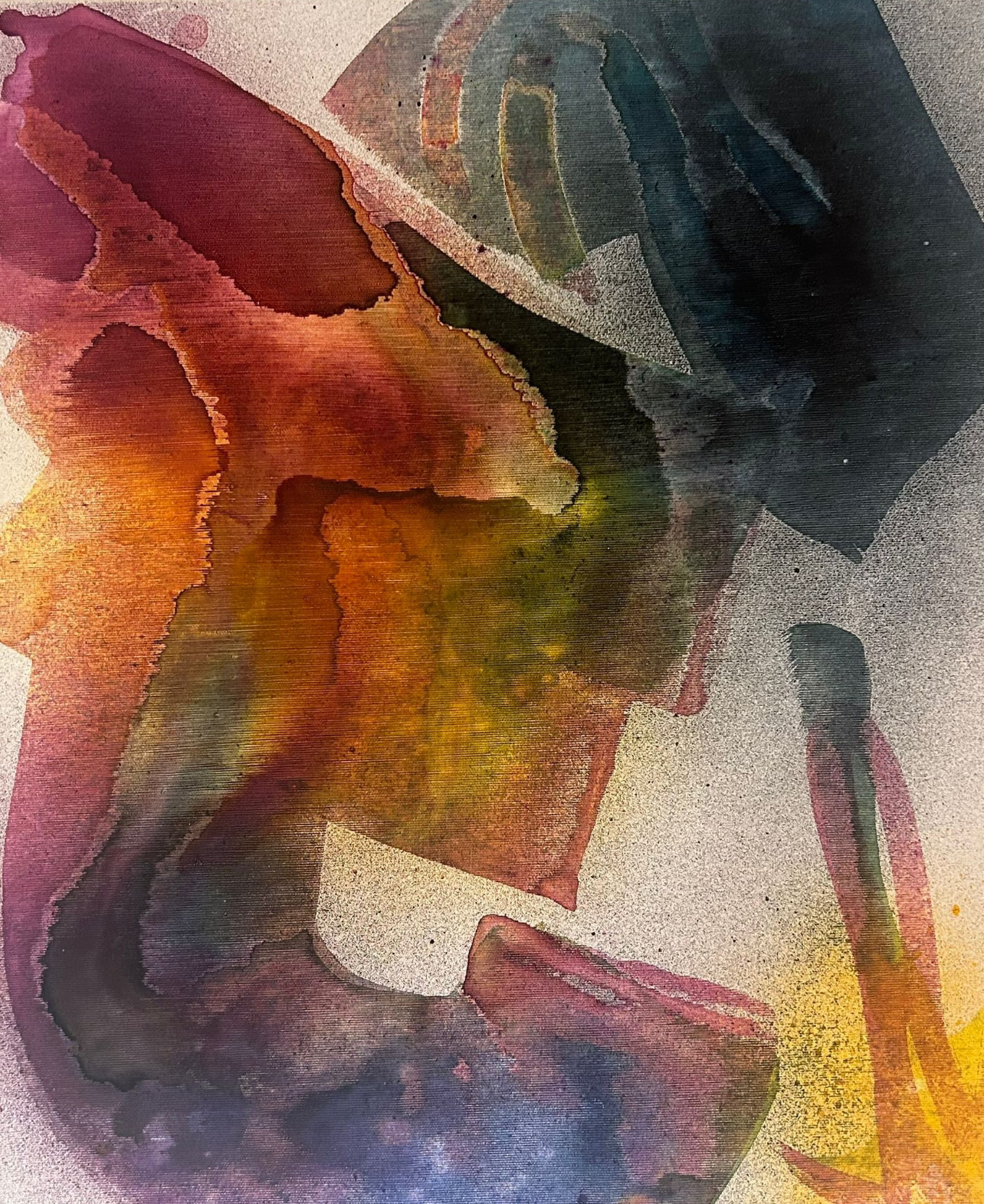
Max Frintrop: Untitled ╱ 2019 ╱ mixed technique ╱ 60×50 cm
